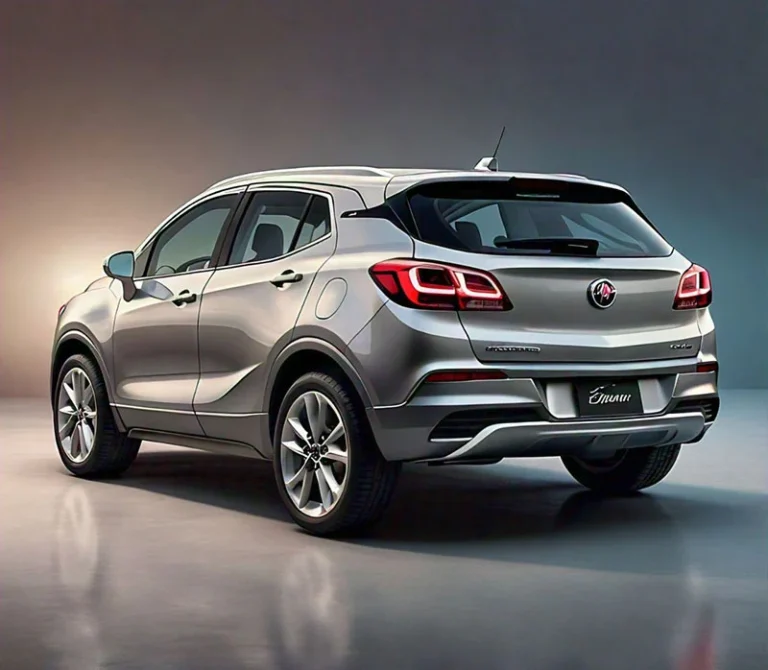Thinking about buying a used Buick Encore? Not all model years are created equal. While the Encore is lauded for its compact design, premium feel, and fuel efficiency, certain years; especially early models have recurring issues that can cost you time, money, and peace of mind.
Quick Answer: Avoid 2013–2017 model years due to turbocharger failures, transmission hiccups, electrical & infotainment bugs, and early recalls. Prefer 2018+ years for improved reliability.
This guide dives deeper into each problem, explains why these years falter, and gives you actionable steps to buy smarter.

Buick Encore Problems by Year (Table)
| Model Year | Major Issues | Severity (🔥) |
| 2013 | Turbocharger failure, recalls | 🔥🔥🔥🔥🔥 |
| 2014–2015 | Electrical glitches, battery drains, cooling problems | 🔥🔥🔥🔥 |
| 2016–2017 | PCV clogging, AWD/transmission, coolant leaks | 🔥🔥🔥 |
Data based on owner complaints, TSBs, and service bulletin frequency.
Deep Dive into Buick Encore Issues
The Buick Encore, while praised for its style and compact design, has been plagued by certain reliability issues over its production years. Let’s take a closer look at the most common problems—turbocharger failures, transmission issues, electrical glitches, and engine-related concerns. Understanding these pitfalls is crucial for any prospective buyer.
Turbocharger Failures: A Common Achilles’ Heel
The turbocharger is the heart of the Encore’s performance, but in certain years, it has been a source of frustration for owners.
Symptoms of Turbo Failure
- Loss of engine power, especially during acceleration
- Whining or high-pitched sounds from the engine bay
- Check Engine Light accompanied by underboost codes
- Noticeable decrease in fuel efficiency
Turbocharger issues often result from oil contamination, heat damage, or clogged lines, which prevent the turbo from receiving adequate lubrication.
The Financial Impact
Replacing a faulty turbocharger isn’t cheap. A full replacement, including parts and labor, can run into the thousands. Owners often face repair bills ranging from $1,500 to $3,000.
Buyer Tips
If considering a used Encore, ask the seller about any previous turbo repairs or replacements. During a test drive, pay close attention to acceleration and listen for unusual sounds when the engine is under load.
Transmission Concerns: From Hesitation to Major Failures
Transmission issues are another area of concern, especially for earlier Encore models. These problems can range from mild annoyances to major mechanical failures.
Common Transmission Problems
- Delayed or harsh gear shifts
- Jerking or hesitation during acceleration
- Transmission slipping, particularly when climbing inclines
- Warning lights related to the drivetrain or traction control systems
These symptoms often point to wear in clutch packs or valve body issues, which may require a full transmission rebuild or replacement.
Repair Costs
A transmission rebuild or replacement can easily exceed $4,000. Even smaller repairs, such as fixing a valve body or replacing transmission fluid, can be costly if not addressed early.
Buyer Tips
When test-driving a potential purchase, take the vehicle on varied terrain. Test how it shifts during both city driving and highway acceleration. Any hesitation, noise, or shuddering should be taken seriously.
Electrical and Infotainment Glitches: Subtle Yet Frustrating
Modern vehicles are loaded with electronics, and the Encore is no exception. However, electrical problems have been a recurring complaint among owners.
Typical Electrical Issues
- Intermittent Bluetooth or touchscreen failures
- Backup camera glitches
- Random warning lights appearing on the dashboard
- Battery drains overnight without obvious cause
Repair Costs
Diagnosing electrical issues can be time-consuming and expensive. Repairs may involve replacing modules or reprogramming systems, with costs ranging from a few hundred to over a thousand dollars depending on the complexity.
Buyer Tips
Inspect all electrical components thoroughly. Test the infotainment system, backup camera, and Bluetooth connectivity. After shutting off the car, listen for clicks or faint sounds from the dashboard, which may indicate parasitic battery drain.
Engine Cooling and PCV System Issues: Silent Threats
The Encore’s 1.4 L engine has also faced challenges with its cooling system and PCV (positive crankcase ventilation) setup.
Common Cooling System Problems
- Coolant leaks from plastic hoses or reservoirs
- Overheating during extended drives
- Frequent need to top up coolant levels
PCV System Problems
- Blocked PCV valves causing rough idling or misfires
- Winter driving issues where moisture freezes in PCV hoses, leading to engine warning lights and reduced performance
Repair Costs
While replacing hoses or PCV valves isn’t overly expensive, prolonged neglect can cause engine damage that leads to repairs costing thousands.
Buyer Tips
Inspect the engine bay for dried coolant stains or odors. Let the engine idle during a test to check for rough running or warning lights.
Summary Table: Risk by Problem Area
| Issue Category | Severity | Typical Repair Cost | Red Flag Symptoms |
|---|---|---|---|
| Turbocharger Failure | 🔥🔥🔥🔥🔥 | $1,500–$3,000 | Power loss, whining sounds |
| Transmission Problems | 🔥🔥🔥🔥 | $2,500–$5,000 | Hesitation, jerky shifts, warning lights |
| Electrical Glitches | 🔥🔥 | $500–$1,200 per issue | Random warnings, infotainment failures |
| Cooling/PCV Failures | 🔥🔥 | $200–$800 | Overheating, rough idle, coolant stains |
Tips for Prospective Buyers
Buying a used Buick Encore can be a rewarding experience—if you choose wisely. Here’s how to navigate the market and ensure you’re getting a reliable vehicle.
1. Conduct a Thorough Pre-Purchase Inspection
Never rely solely on appearance. A clean exterior doesn’t guarantee mechanical soundness.
What to Check:
- Turbocharger: Listen for odd noises during acceleration.
- Transmission: Test on hills and during stop-and-go traffic for hesitation or jerking.
- Cooling System: Check for dried coolant stains and any odor of antifreeze.
- Electrical Systems: Test every feature—infotainment, Bluetooth, backup camera, lights.
2. Review the Vehicle’s History
Obtain a comprehensive history report. This reveals:
- Past accidents or major repairs
- Recalls that may not have been addressed
- Service history, especially for turbo and transmission work
Ask the seller for maintenance receipts or dealer records.
3. Prioritize Reliable Years
Not all Buick Encore years are equal. Safer choices include:
- 2018–2021 models: Known for improved reliability and fewer complaints
- 2016–2017 models: Benefited from mid-cycle updates that fixed several early issues
Avoid 2013–2017 models unless there’s clear evidence of major repairs or replacements.
4. Budget for Potential Repairs
Even with careful buying, budget extra for maintenance. Consider setting aside $1,500–$3,000 for possible turbo or transmission work within the first few years of ownership.
5. Consider Certified Pre-Owned (CPO)
Buying a CPO Buick Encore provides:
- Warranty coverage for powertrain issues
- Dealer-certified inspections of critical systems
- Peace of mind knowing major problems have been addressed
6. Post-Purchase Best Practices
Once you buy your Encore:
- Change oil every 5,000–7,000 miles using synthetic oil
- Service the transmission every 50,000 miles
- Replace the PCV valve and inspect cooling systems proactively
Buick Encore Years to Avoid – FAQs
Q: Which years of Buick Encore should I avoid?
A: Avoid 2013–2017 due to turbo failures, electrical or transmission issues, and cooling leaks.
Q: Is the 2017 Encore reliable?
A: Not really—reports include engine smoke, recalls, and drivetrain hiccups
Q: Are there recalls I should watch for?
A: Yes—2013–2015 models had recalls for passenger airbags, seatbelt stalk stability, and electrical system faults
Q: Which Encore years are most dependable?
A: Starting 2018, then 2019 and early 2020–21 GX, are the safer bets.
Q: What are the most common problems with a Buick Encore?
A: The top issues include engine performance problems (stalling, power loss, overheating), turbocharger failures, oil/coolant leaks, and electrical system glitches
Q: Which Buick Encore model years have the fewest complaints?
A: The 2018–2021 models consistently received few complaints post-facelift and new-generation launch—especially the 2020–21 GX
Q: Do Buick Encores have transmission issues?
A: Yes—many early models (especially 2013–2017) have recorded delayed or jerky shifting. Some even experienced transmission failure at relatively low mileage
Q: Are turbo problems common in all Buick Encores?
A: Turbo issues are especially common in early Encore models (2013–2017). Some drivers report turbo replacement around 94,000 miles. Reliability improves in later models
Which Years Of Used Buick Encores Are Most Reliable?
Choosing the right model year can make all the difference when buying a used Buick Encore. Based on user feedback, reliability data, and expert reviews, the following years consistently outperform the rest:
2016–2017 Buick Encore (First Generation, Facelift Models)
- Considered a reliable sweet spot—owners report fewer major issues.
- Improved engine performance and fewer infotainment complaints after the mid-cycle refresh
- For those who want a balance between modernization and affordability, 2016–17 is ideal.
2018 Buick Encore
- Widely regarded as the best year for reliability in the original Encore lineup.
- Fewer turbocharger, transmission, and electrical complaints than earlier models
- Enhanced interior quality and added safety upgrades make it a smart buy.
2019 Buick Encore
- Post-facelift model that continues 2018’s momentum.
- Earned positive reliability scores from outlets like Consumer Reports
2020–2021 Buick Encore GX (Newer Generation)
- Built on an upgraded platform with better powertrains and durability .
- Recognized by Consumer Reports as one of the most reliable three-year-old vehicles
- Strong reliability ratings from J.D. Power and RepairPal (4.0/5, 5th in class)
Reliability Snapshot
| Year | Reliability Highlights |
|---|---|
| 2016–2017 | Fewer engine/electrical issues; facelift improvements |
| 2018 | Best-in-class reliability in first-gen Encore |
| 2019 | Continuation of 2018’s trustworthiness |
| 2020–2021 GX | Fresh platform, upgraded features & top-tier reliability |
Why These Years Stand Out
Addressed Problem Areas: Turbocharger, transmission, electrical, and cooling issues from earlier years were mostly resolved by 2017–18
Data Supports Reliability: 2018+ models show strong Aceena scores: RepairPal’s 4/5; iSeeCars gives 7.7/10 with nearly 12 years/134k miles lifespan
Advanced Safety & Feature Upgrades: 2020–2021 Encore GX includes modern connectivity, advanced safety (e.g., lane departure warning), and better build quality
Competitor Comparison Table: Buick Encore vs Alternative
| Feature | Buick Encore | Mazda CX-30 | Honda HR-V | Hyundai Kona |
|---|---|---|---|---|
| Engine Options | 1.4L Turbo 4-Cyl | 2.5L 4-Cyl (non-turbo) | 2.0L 4-Cyl | 2.0L & 1.6L Turbo 4-Cyl |
| Horsepower | 138–155 hp | 186 hp | 158 hp | 147–195 hp |
| Fuel Economy (MPG) | 24 city / 32 highway | 26 city / 33 highway | 28 city / 34 highway | 27 city / 33 highway |
| Cargo Space (max) | 48.4 cu ft | 45.2 cu ft | 55.1 cu ft | 45.8 cu ft |
| AWD Availability | Yes | Yes | Yes | Yes |
| Reliability (Consumer) | Average | Above Average | Excellent | Above Average |
| Tech & Safety Features | Basic (older models) | Advanced (standard) | Moderate (standard) | Very Advanced (standard) |
| Ride Comfort | Smooth, quiet | Sporty, engaging | Soft, family-friendly | Balanced, agile |
| Maintenance Cost (annual) | Moderate | Low–Moderate | Low | Moderate |
| Best For | City drivers seeking a quiet compact SUV | Drivers wanting sporty feel with upscale design | Families needing space & reliability | Tech-savvy drivers seeking modern features |
Final Thoughts
The Buick Encore can be a practical and stylish compact SUV—but only if you choose the right model year. By steering clear of problematic years like 2013–2017 and focusing on more reliable options such as the 2018–2021 models, you can avoid unexpected repairs and enjoy a smoother ownership experience.
Remember, a thorough inspection, vehicle history review, and awareness of common issues are your best tools for making a smart purchase. Whether you’re exploring the Encore or its competitors, prioritize reliability, safety, and long-term costs to ensure your next SUV is both dependable and enjoyable.
With these insights, you’re now ready to shop confidently and find a vehicle that fits your needs perfectly.

